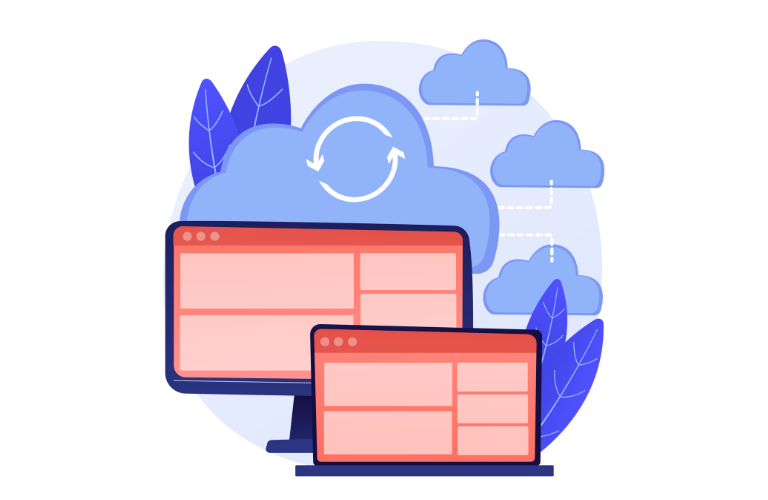Serverless architecture is a popular trend among Laravel developers who want to simplify deployment and scaling. Instead of managing servers yourself, you send a function, and your cloud provider (like AWS) takes care of everything else, including server maintenance, OS updates, and scaling based on demand.
Why choose serverless with Laravel? It’s perfect for tasks that run independently or need scalable performance. Tasks like processing webhooks or handling sudden user spikes can benefit greatly from serverless setups. With this approach, you focus on coding while the cloud provider handles the infrastructure.
AWS Lambda is an excellent choice for this. It allows you to run your Laravel app as a function that automatically scales. You only pay for the compute power you use—no more idle server costs. This makes it an ideal option for developers looking to optimize costs.
Table of Contents
Setting Up Serverless Architecture in Laravel
To get started, you need the Serverless Framework, which streamlines deploying Laravel apps to AWS Lambda. To install it globally, run:
npm install -g serverless@3Note: Stick to version 3—version 4 has licensing issues that could cause problems.
Next, install Bref, a PHP package that integrates Laravel with Lambda:
composer require bref/bref bref/laravel-bridgeBref works in tandem with the Serverless Framework to manage PHP runtimes on Lambda.
Then, create a new Laravel project:
composer create-project laravel/laravel serverless-tutorialThis will give you a clean base to work from. Open it in your preferred editor (VS Code is recommended).
Now, publish the serverless configuration:
php artisan vendor:publish --tag=serverless-configThis generates a serverless.yml file that acts as your deployment blueprint. Edit it to define your service name (e.g., serverless-tutorial) and specify aws as your provider. Choose a region (e.g., us-east-1) that matches your AWS resources.
Here’s an example of what your serverless.yml might look like:
service: serverless-tutorial
provider:
name: aws
region: us-east-1
functions:
web:
handler: public/index.php
runtime: php-83-fpmThe php-83-fpm runtime supports PHP 8.3, but Lambda also supports versions 8.1 to 8.3.
You’ll also need to configure your AWS credentials:
serverless config credentials --provider aws --key YOUR_AWS_KEY --secret YOUR_AWS_SECRETThis creates a ~/.aws/credentials file with your key and secret, so ensure you keep this file secure.
Serverless architecture uses AWS CloudFormation behind the scenes. When you deploy, it creates an S3 bucket, uploads your packaged code, and launches a Lambda function. It also configures roles and policies automatically.
Deploying Your Serverless Laravel App
Before deploying, tweak your Laravel logging configuration. Lambda doesn’t have persistent storage, so you should use AWS CloudWatch for logs. In your config/logging.php file, set the default logging channel to stderr:
'default' => 'stderr',This directs your logs to CloudWatch for easy debugging.
Now, deploy your app with:
serverless deployThe first deployment may take 3–5 minutes. Once done, you’ll see a CloudFormation stack in your AWS console, along with an S3 bucket and Lambda function. If your AWS key is inactive, reactivate it in the IAM console first.
After deployment, visit the provided URL to see Laravel’s welcome page. Check CloudWatch logs to confirm everything is working. If no logs are showing, clear the config cache with:
php artisan config:clearThen redeploy.
Scaling and Managing Your Serverless Laravel App
Serverless architecture offers significant benefits, including faster launches and effortless scalability. You can handle thousands of requests without worrying about infrastructure management. To get more information on AWS Lambda, check the official AWS Lambda documentation.
Exploring Advanced Features: Sessions and Queues in Serverless
Now that your Laravel app is running on AWS Lambda, it’s time to enhance it with some advanced features like sessions and queues.
Handling Sessions in Serverless
Serverless environments like Lambda are stateless, so handling sessions requires some adjustments. You can’t use traditional storage for sessions. Instead, Lambda provides a /tmp directory, which is the only writable storage. To configure sessions, update config/session.php as follows:
'driver' => 'file',
'path' => '/tmp',For larger applications, consider using an external database (like RDS) to store sessions, though this requires additional configuration.
Queues: Offloading Tasks for Better Performance
Serverless architecture shines when it comes to handling queues. Imagine receiving thousands of webhooks at once—without a queue, Lambda might struggle. Fortunately, Amazon SQS (Simple Queue Service) solves this by acting as a buffer for incoming tasks.
Start by creating an SQS queue in AWS:
- Go to the SQS console.
- Click “Create Queue,” name it serverless-queue, and choose your region (e.g., us-east-1).
- Copy the queue URL for later.
Next, update your .env file to configure SQS:
QUEUE_CONNECTION=sqs
SQS_QUEUE=https://sqs.us-east-1.amazonaws.com/YOUR_ACCOUNT_ID/serverless-queueInstall the AWS SDK:
composer require aws/aws-sdk-phpNow, create a job to handle tasks:
php artisan make:job ProcessWebhookIn app/Jobs/ProcessWebhook.php, define the job handler:
public function handle() {
\Log::info('Webhook processed in queue');
}You can then dispatch this job from your routes/web.php:
use App\Jobs\ProcessWebhook;
Route::get('/', function () {
ProcessWebhook::dispatch();
return 'Webhook queued!';
});Lambda also needs permission to send messages to SQS. In your AWS console, find your Lambda function’s IAM role and add this policy:
{
"Statement": [
{
"Effect": "Allow",
"Action": ["sqs:SendMessage"],
"Resource": "arn:aws:sqs:us-east-1:YOUR_ACCOUNT_ID:serverless-queue"
}
]
}Redeploy your app with:
serverless deployNow, hit your app’s URL a few times, and check SQS to see the messages stacking up.
Processing Jobs from the Queue
To process queued jobs, run the following command locally or on an EC2 instance:
php artisan queue:listenCheck CloudWatch logs for messages like “Webhook processed in queue” for each job.
Optimizing Performance and Handling Errors
Serverless architecture can handle high traffic with ease, but performance issues can still arise. If jobs pile up, you can adjust your queue listener to retry failed jobs without clogging the system:
php artisan queue:work --tries=3Conclusion: Why Choose Serverless for Laravel
Serverless architecture offers numerous benefits, including scalability, ease of management, and cost savings. Lambda charges based on execution time, not uptime, making it a cost-effective solution compared to traditional server models. When combined with tools like Laravel Vapor, serverless architecture can take your app’s performance and scalability to the next level.
For more detailed information, consult the Laravel queue documentation for tips on handling queues in serverless environments.
FAQs
1. What is serverless architecture in Laravel?
Serverless architecture in Laravel means running your app without managing servers. You deploy it as a function, like on AWS Lambda, and the cloud provider handles scaling and upkeep. It’s great for Laravel apps needing flexibility and low maintenance.
2. Why should I use serverless architecture with Laravel?
Serverless architecture saves time and money. It scales automatically for traffic spikes, cuts server management, and charges only for usage. For Laravel, it’s perfect for tasks like webhooks or apps with unpredictable demand.
3. How do I set up serverless architecture for Laravel?
Start by installing Serverless Framework (npm install -g serverless@3) and Bref (composer require bref/bref bref/laravel-bridge). Create a Laravel app, configure serverless.yml, add AWS credentials, and run serverless deploy. Your app then runs on Lambda!
4. Can serverless architecture handle Laravel queues?
Yes! With serverless architecture, you can use Amazon SQS for queues. Create a queue, connect it via your .env file, dispatch jobs from Laravel, and process them with php artisan queue:listen. It’s ideal for heavy workloads.
5. What are the downsides of serverless architecture in Laravel?
Serverless architecture has limits like no persistent storage—use /tmp or CloudWatch for logs. Sessions need workarounds, and first deployments take a few minutes. Still, the scalability and ease often outweigh these quirks.




